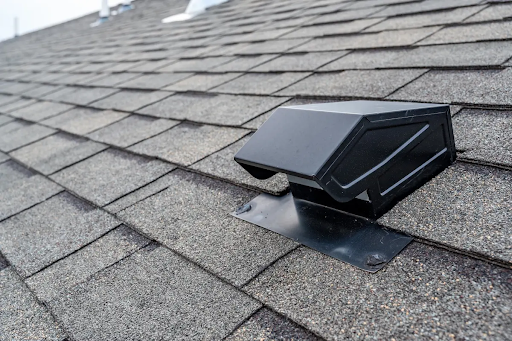Roof installation is a critical component of building construction and maintenance, providing essential protection against the elements. Whether for residential or commercial properties, understanding the intricacies of roof installation is vital for ensuring durability and functionality. This guide explores key considerations and best practices, with a particular focus on commercial roof installation and roof ventilation systems.
Key Considerations for Roof Installation
Before initiating a roof installation project, several important factors must be taken into account to guarantee a successful outcome.
Selecting the Right Roofing Material
Choosing the appropriate roofing material is fundamental to the roof’s longevity and performance. Options vary widely, including asphalt shingles, metal roofing, and more specialized materials. For commercial buildings, materials such as TPO (Thermoplastic Olefin), EPDM (Ethylene Propylene Diene Monomer), and PVC (Polyvinyl Chloride) are favored for their durability, energy efficiency, and low maintenance requirements.
Budgeting for the Project
A clear understanding of the total project cost is essential. This encompasses not only the price of materials but also labor costs, potential permit fees, and unexpected expenses. Developing a detailed budget helps prevent financial surprises and ensures that resources are allocated effectively throughout the project.
Legal Requirements and Permits
Many regions require permits for roof installation. It is crucial to consult local building authorities to understand the specific regulations that apply to your project. Securing the necessary permits before starting work helps avoid legal complications and ensures compliance with local building codes.
Assessing Structural Integrity
Prior to installation, a thorough evaluation of the existing structure is necessary. This includes inspecting the roof deck for damage and verifying that it can support the new roofing material. Addressing any required repairs before installation is essential for creating a stable foundation.
The Roof Installation Process
The roof installation process typically follows a series of structured steps:
- Removing the Old Roof: The first step involves stripping away the existing roofing material to expose the roof deck.
- Repairing the Deck: Any damaged areas of the roof deck must be repaired to ensure stability and safety.
- Installing Underlayment: A waterproof underlayment is applied to provide an additional layer of protection against moisture infiltration.
- Applying New Roofing Material: The chosen roofing material is installed over the underlayment, following manufacturer specifications.
- Installing Flashing: Flashing is added around critical areas, such as chimneys and vents, to prevent water leaks.
- Final Inspection and Cleanup: A comprehensive inspection is conducted to verify the quality of the installation, followed by thorough cleanup of the work area.
While some homeowners may consider a DIY approach, hiring professional contractors is advisable. Experienced professionals bring expertise and knowledge, ensuring that the installation meets industry standards and is completed efficiently.
Commercial Roof Installation
Commercial roof installation involves unique challenges and considerations compared to residential projects.
Types of Commercial Roofing Systems
Common types of commercial roofing systems include:
- Flat Roofs: These roofs are prevalent in commercial buildings and require specific materials like TPO, EPDM, or modified bitumen to effectively manage water drainage.
- Low-Slope Roofs: Similar to flat roofs but with a slight slope, these roofs also necessitate careful material selection to prevent water pooling.
- Green Roofs: Gaining popularity for their environmental benefits, green roofs require additional structural support and specialized waterproofing systems.
Importance of Professional Installation
Given the complexity of commercial roofing, professional installation is essential. Experts can navigate the specific requirements of commercial roofs, ensuring compliance with local codes and maximizing the roof’s lifespan.
Roof Ventilation Systems
Effective roof ventilation is crucial for maintaining the health and longevity of a roofing system.
Benefits of Roof Ventilation
Proper ventilation helps regulate temperature and moisture levels within the attic space, preventing issues such as mold growth and ice dam formation. Additionally, it enhances energy efficiency by reducing the load on heating, ventilation, and air conditioning (HVAC) systems.
Types of Ventilation Systems
Several types of roof ventilation systems are commonly used, including:
- Ridge Vents: Installed at the peak of the roof, ridge vents allow hot air to escape while drawing in cooler air from soffit vents.
- Soffit Vents: Located under the eaves, soffit vents provide intake airflow to the attic, promoting circulation.
- Gable Vents: Positioned at the gable ends of the roof, these vents can work in conjunction with other ventilation methods to enhance airflow.
Installation Best Practices
When installing roof ventilation systems, it is essential to ensure balanced airflow throughout the attic. This can be achieved by calculating the appropriate vent area based on the size of the attic and the roofing system in place. Consulting with a roofing professional can help determine the most effective ventilation strategy for a specific building.
Conclusion
A thorough understanding of roof installation, including material selection, budgeting, legal requirements, and the installation process, is crucial for a successful project. For commercial roof installations, professional expertise is indispensable in navigating the complexities involved. Additionally, implementing effective roof ventilation systems is vital for maintaining the integrity and efficiency of the roofing structure. By adhering to best practices and considering these key factors, property owners and managers can ensure a durable and functional roof that withstands the test of time.









